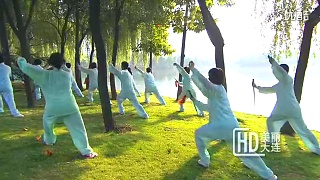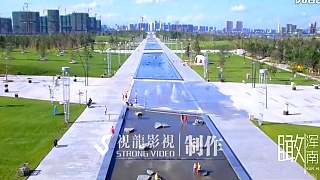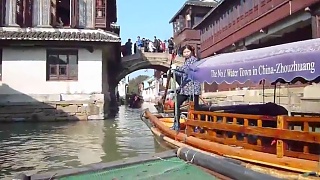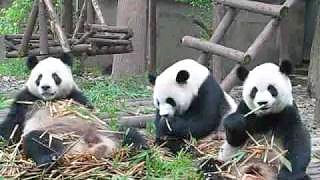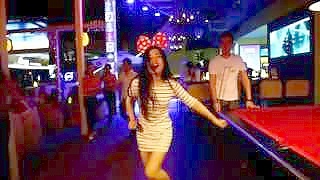With Sun Kissed Bucket List ...
[640],shadow=true,start=,stop=Dalian Visitor Guide
Dalian, located in northeastern China’s Liaoning Province, is a vibrant coastal city known for its beautiful beaches, modern architecture, and rich history as a strategic port. Often called the “Pearl of the North,” Dalian offers a blend of European and Asian influences, making it a unique destination.
How to Get to Dalian
- By Air: Dalian Zhoushuizi International Airport (DLC) connects the city to major domestic and international destinations.
- By Train: High-speed trains link Dalian with cities like Shenyang, Beijing, and Harbin.
- By Ferry: Ferries operate to destinations like Yantai, Weihai, and Incheon (South Korea).
- By Road: Well-connected highways make Dalian accessible by car or long-distance bus.
Top Attractions
Xinghai Square
The largest city square in Asia, Xinghai Square features a star-shaped fountain and scenic views of Dalian Bay. Visit during sunset for spectacular views.
Golden Pebble Beach (Jinshitan Scenic Area)
Known for its golden sand and unusual rock formations, this area also includes an amusement park, golf course, and hiking trails. Activities include swimming and kayaking.
Tiger Beach Ocean Park
A marine park with an aquarium, polar animal exhibits, and sea lion and dolphin performances. Don’t miss the massive tiger sculpture symbolizing the park.
Dalian Forest Zoo
This expansive zoo includes wild animals, panda habitats, and safari-style tours. Interactive activities like feeding giraffes are available.
Russian Street
A historic street with Russian-style architecture reflecting Dalian’s colonial past. Shop for souvenirs and enjoy traditional cuisine here.
Binhai Road
A scenic coastal road ideal for cycling, walking, or driving. Highlights include Bird Singing Woods and North Bridge.
Zhongshan Square
A European-style square surrounded by colonial-era buildings, now housing banks and offices. Visit in the evening to see the buildings illuminated.
Bangchuidao Island
A peaceful retreat with beaches, gardens, and hiking trails. Perfect for photography and relaxation.
Lushun (Port Arthur)
This suburb, also known as Port Arthur, played a significant role in the Russo-Japanese War. Key sites include Lushun Museum and Baiyu Hill.
Activities and Experiences
- Beach hopping at Xinghai Beach, Fujiazhuang Beach, and Bangchuidao.
- Sampling fresh seafood such as sea cucumbers, scallops, and steamed crabs.
- Exploring the nightlife in Zhongshan District.
- Attending festivals like the Dalian International Beer Festival (July–August) and the Cherry Blossom Festival (April).
- Shopping at Friendship Square and Victory Square.
Local Cuisine
- Steamed Scallops with Garlic: Fresh scallops topped with garlic and vermicelli.
- Sea Cucumber Soup: A delicacy known for its nutritional value.
- Jianbing (Chinese Crepe): A popular street food filled with egg, scallions, and sauce.
- Fried Clams: Stir-fried clams with garlic, ginger, and chili.
Best Time to Visit
- Spring (April–June): Mild weather and blooming flowers make this an ideal season.
- Autumn (September–November): Cooler temperatures and stunning foliage.
- Summer (July–August): Perfect for beach activities.
Transportation
- Metro: The Dalian Metro connects major tourist spots.
- Buses: Extensive routes provide affordable travel options.
- Taxis and Ride-Sharing: Widely available and convenient. Use apps like Didi.
- Bicycles: Rent bikes to explore scenic areas like Binhai Road.
Tips for Visitors
- Language: While Mandarin is the primary language, some signs and services are available in English.
- Currency: Carry Chinese yuan (RMB). Mobile payment apps like Alipay or WeChat Pay are widely used.
- Weather: Pack light clothing and sunscreen in summer; warmer layers are needed in winter.
Dalian offers a unique blend of modernity and tradition, with its scenic coastlines, rich history, and delicious cuisine making it an unforgettable destination.
Dalian, located in China's Liaoning Province, is a vibrant coastal city with a rich history, stunning architecture, beautiful beaches, and a thriving culinary scene. Here's a guide for tourists visiting Dalian:
Xinghai Square: As one of the largest city squares in the world, Xinghai Square is a must-visit attraction in Dalian. It offers panoramic views of the sea and is a popular spot for leisurely walks, kite flying, and enjoying street performances.
Dalian Zhongshan Square: This historic square is surrounded by grand European-style buildings dating back to the city's colonial past. It's a great place to admire the architecture, take photos, and learn about Dalian's history.
Binhai Road: Known as Dalian's 'Lover's Road', Binhai Road is a scenic coastal promenade that stretches for several kilometers along the shoreline. Visitors can stroll along the waterfront, rent bicycles, and enjoy stunning views of the sea and city skyline.
Dalian Discovery Kingdom: This amusement park is a fun-filled destination for families and thrill-seekers. It features a variety of rides, shows, and attractions, including roller coasters, water slides, and a dolphin performance.
L�shun (Port Arthur): L�shun is a historic port city located near Dalian, known for its well-preserved colonial architecture and military history. Visitors can explore sites such as the L�shun Naval Port, L�shun Prison, and L�shun Museum to learn about the city's past.
Dalian Forest Zoo: Home to a wide variety of animals from around the world, Dalian Forest Zoo is a popular attraction for families and animal lovers. Highlights include the panda pavilion, safari park, and sea lion show.
Dalian Tiger Beach Ocean Park: This marine park is home to a diverse range of marine life, including sharks, dolphins, and beluga whales. Visitors can watch exciting animal performances, explore underwater tunnels, and even swim with dolphins.
Russian Street (Zhongshan Road): Located in Dalian's downtown area, Russian Street is a charming pedestrian street lined with shops, cafes, and restaurants housed in buildings reminiscent of Russian architecture. It's a great place to shop for souvenirs and sample Russian-inspired cuisine.
Bangchui Island: Just a short boat ride from Dalian, Bangchui Island is a scenic getaway known for its pristine beaches, crystal-clear waters, and lush greenery. Visitors can relax on the beach, go swimming, or explore the island's hiking trails.
Local Cuisine: Dalian is famous for its fresh seafood and local delicacies such as stir-fried sea cucumber, grilled squid, and seafood hotpot. Be sure to sample these dishes at one of the city's many seafood restaurants.
With its mix of natural beauty, historical landmarks, and modern attractions, Dalian offers a diverse range of experiences for tourists to enjoy. Whether you're interested in sightseeing, outdoor activities, or simply relaxing by the sea, Dalian has something for everyone.

 A trip to DaLian, LiaoNing province
A trip to DaLian, LiaoNing province
